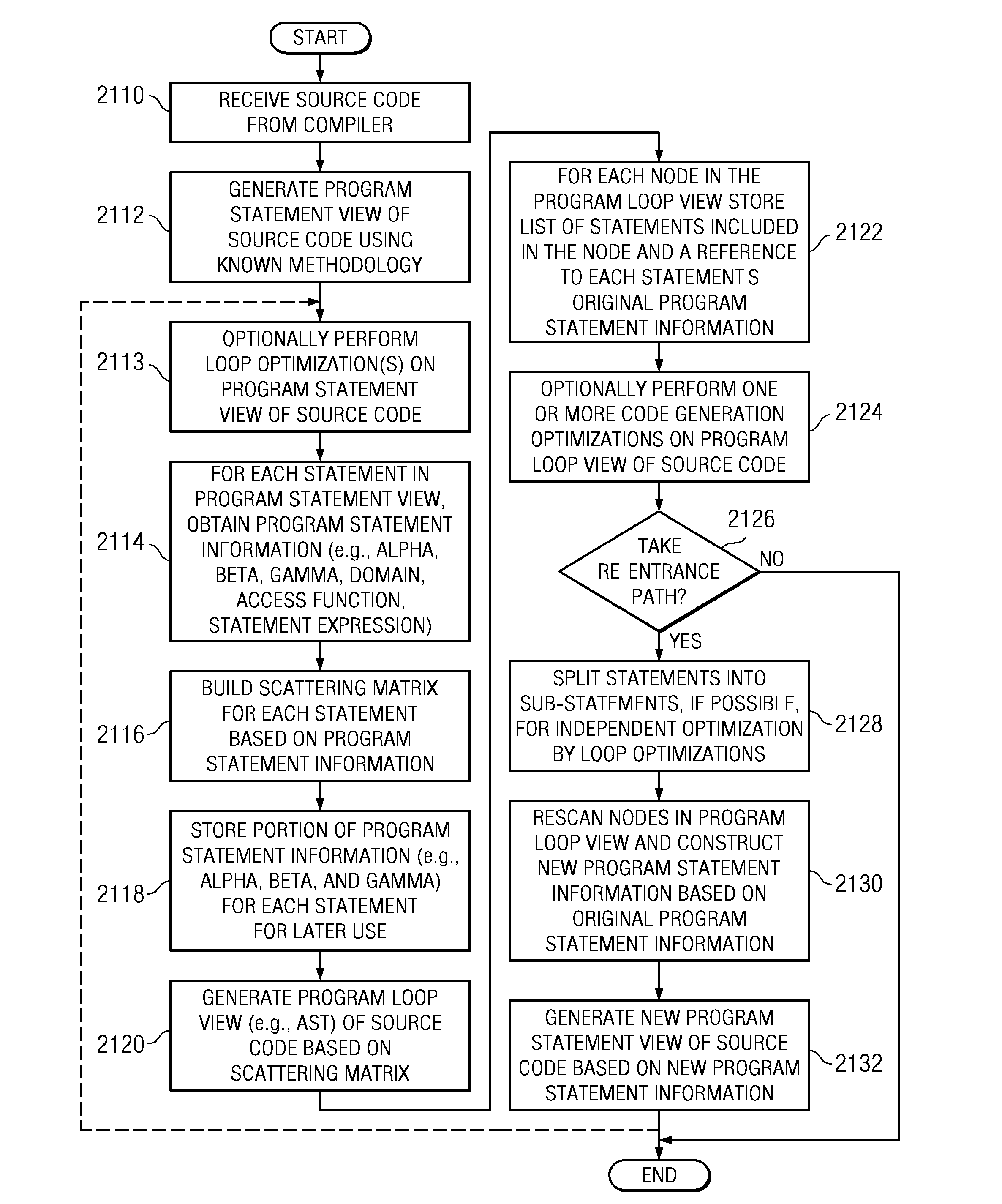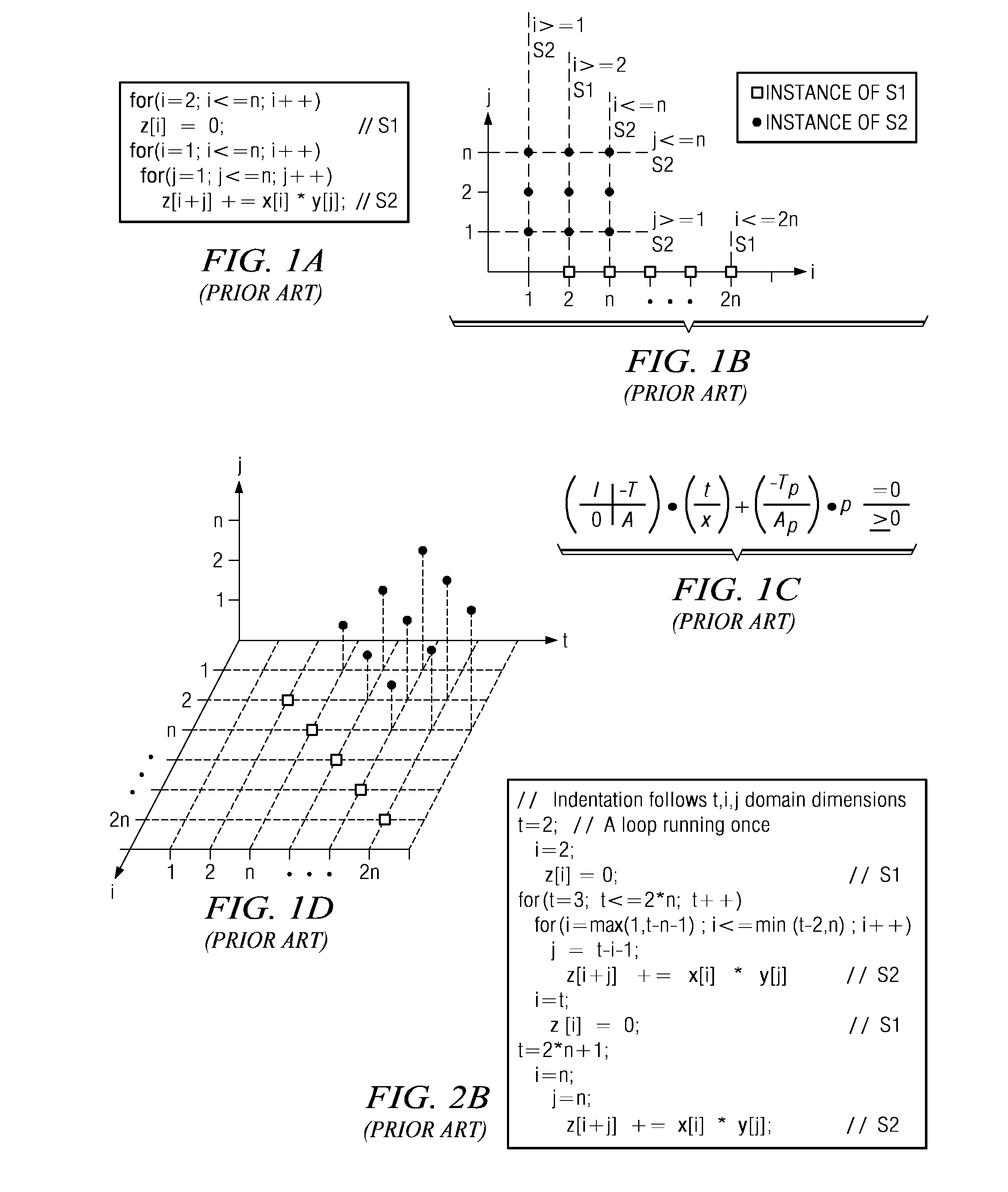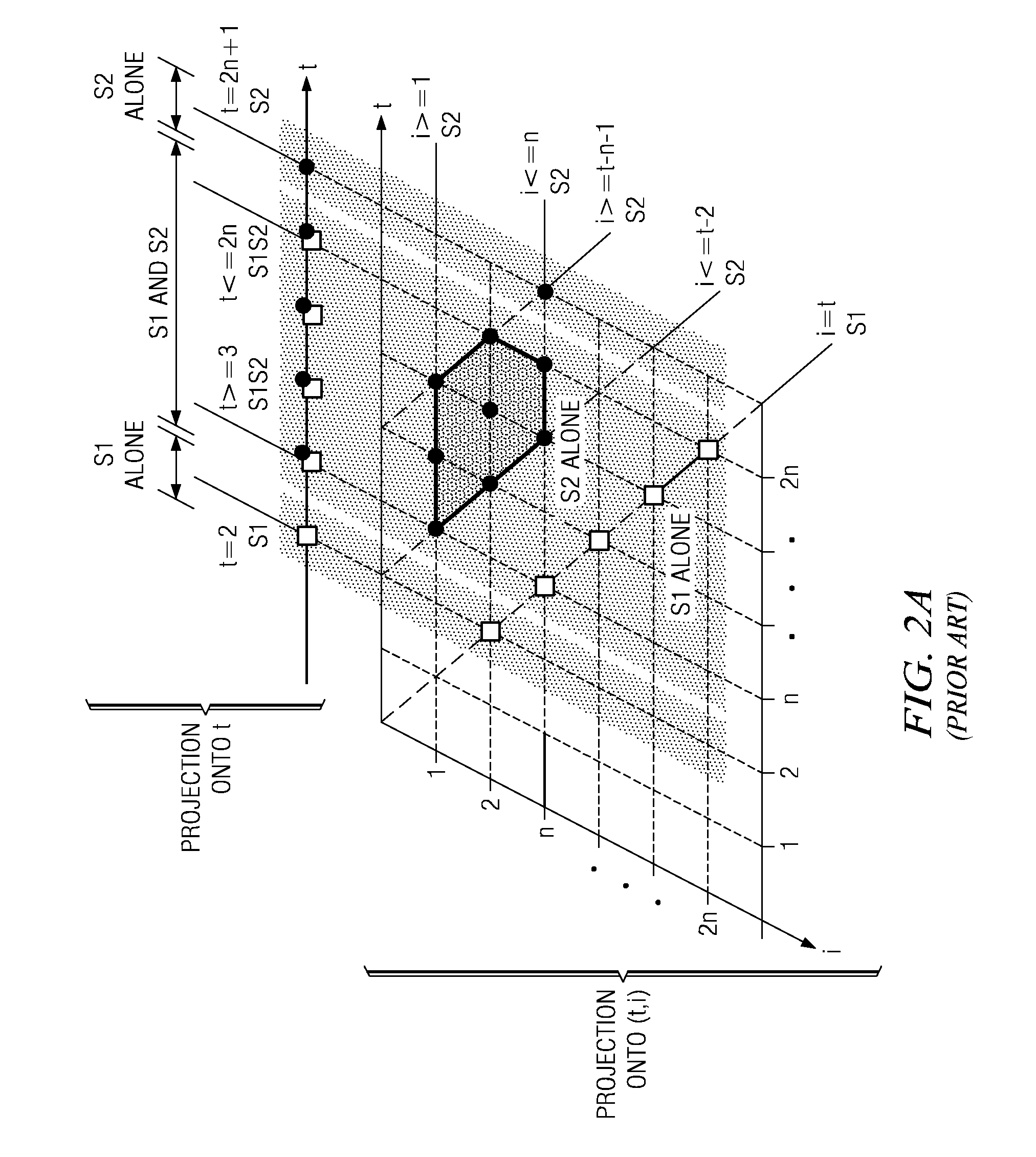Selective code generation optimization for an advanced dual-representation polyhedral loop transformation framework
a polyhedral loop and optimization technology, applied in the field of data processing system and method, can solve the problems of unoptimized code, too slow code generation, and often discarded or unused computer code by computer users
- Summary
- Abstract
- Description
- Claims
- Application Information
AI Technical Summary
Benefits of technology
Problems solved by technology
Method used
Image
Examples
Embodiment Construction
edral rescan operations by a polyhedral rescan module and a successive operation of the code generation optimization / parallelism detection module;
[0058]FIGS. 17A-17C are exemplary diagrams illustrating an example of code optimization where two statements have had their speed accelerated by a factor of 3 in accordance with one illustrative embodiment;
[0059]FIGS. 18A-18F are exemplary diagrams illustrating code instability that may be introduced by a re-entrance path in a polyhedral loop transformation mechanism;
[0060]FIGS. 19A-19B are exemplary diagrams illustrating scattering domains for statements S1 and S2 and a resulting stable ASTP′ obtained using the scatter domain with stretching transformation of one illustrative embodiment;
[0061]FIGS. 20A-20C are exemplary diagrams illustrating an example of domain stretching under re-entrance in accordance with one illustrative embodiment;
[0062]FIG. 21 is a flowchart outlining an exemplary operation for utilizing a re-entrance path to obtai...
PUM
 Login to View More
Login to View More Abstract
Description
Claims
Application Information
 Login to View More
Login to View More - R&D
- Intellectual Property
- Life Sciences
- Materials
- Tech Scout
- Unparalleled Data Quality
- Higher Quality Content
- 60% Fewer Hallucinations
Browse by: Latest US Patents, China's latest patents, Technical Efficacy Thesaurus, Application Domain, Technology Topic, Popular Technical Reports.
© 2025 PatSnap. All rights reserved.Legal|Privacy policy|Modern Slavery Act Transparency Statement|Sitemap|About US| Contact US: help@patsnap.com



